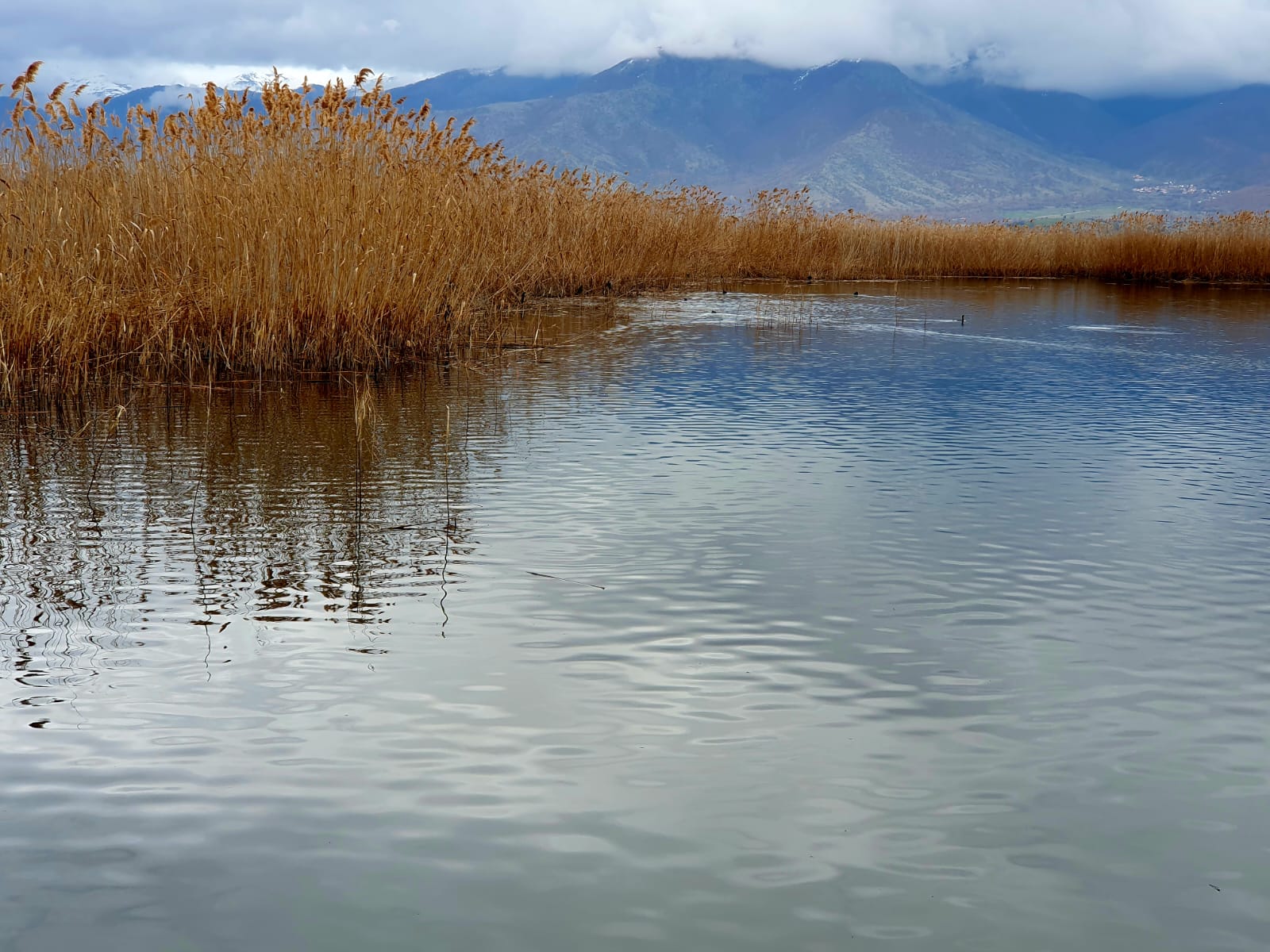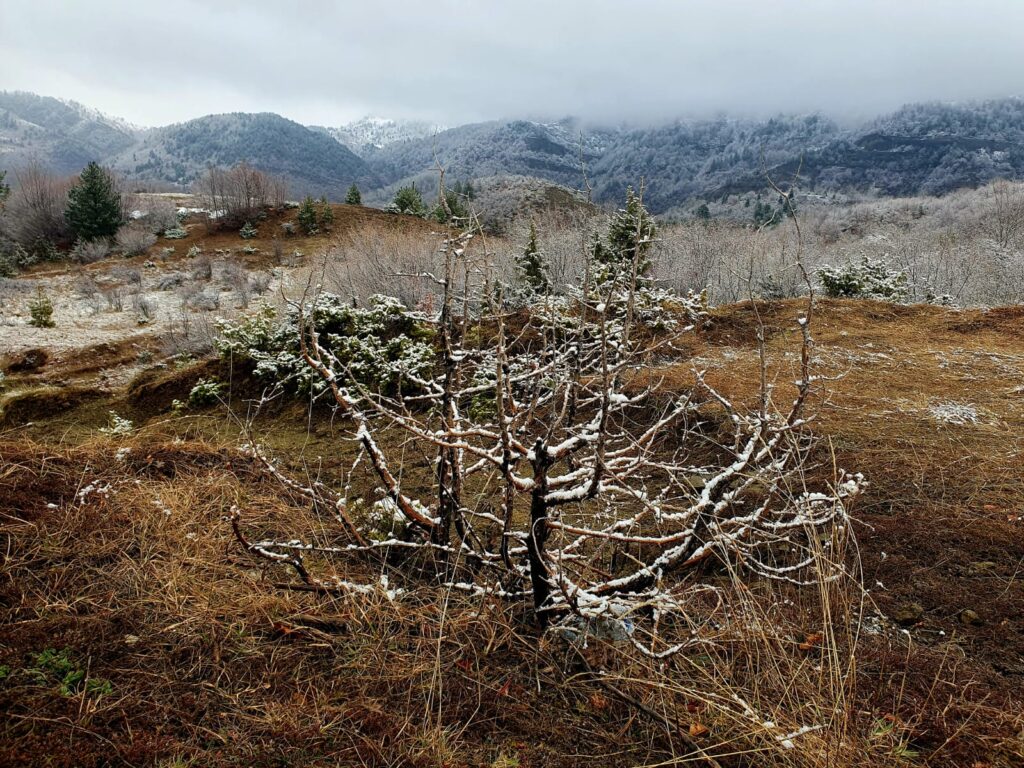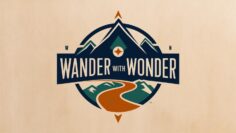Can you still enjoy when it’s so cold outside ?
Trip to Greece and South Albania – Chapter 3
At the end of that road, if it had continued just a little further, it would have crossed into Albania. Standing in silence was a small fishing village on the lakeshore—an even quieter scene, with only a few small fishing boats, a solitary pier, a few waterbirds, aquatic plants, and above all, calm waters. All around, wandering cows were grazing on fresh green grass in a serenity that perhaps only resembles the relaxed way the villagers live. I strolled among the village houses, and one could count the residents on one or two fingers—very old houses, a few shops, three cafes, and two taverns. It seemed that at that time there were more visitors than locals. The tranquility was so pleasant, the silence so profound, and despite the dreary weather that gave the lake a dramatic appearance, I felt I wanted to stay there even longer than planned.
The Greeks take pride in the enormous white bean that grows in northwestern Greece, and when I saw it on the menu at a restaurant I entered, where I ordered a dish of gigantic beans in tomato sauce, of course, I couldn’t resist. The deep, smoky flavor did not disappoint, and there is no doubt that the village left one craving more. Yet, since it was already late afternoon approaching evening—and I had planned to cross the border into Albania once more to reach the city of Korçë, with a desire to visit yet another village—I decided to move on.
A short fifteen-minute drive led me to another truly unique place—on the far side of the hill ridge stood a quiet shore beside a small parking lot with only a few cars. A narrow pedestrian bridge led, in a ten-minute walk, to a tiny island named Agios Achillios. In the past, one could reach the island only by small boats; but after the bridge was built, it has become accessible on foot. The walk, accompanied by a flock of waterbirds, brings you to this tiny island that resembles a village in India or in the Caucasus mountains in Georgia—there are almost no people at all, only a few old houses leaning as if about to fall, one closed tavern (perhaps because it is winter now), the remnants of a church, a low hill with cows grazing, and magnificent views of the snow-capped mountains surrounding the lake. The scenery—an interplay of sky, mountains, and vegetation—is dramatic and permanently etched in memory.
The grey hues deepen toward sunset, and the road toward Albania diverts from the great lake, returning to forests, mountains, and streams along roads empty of cars.
A border crossing is usually a busy spot, teeming with vehicles, people, and hustle. But here, my phone showed that the turnoff to the border crossing was still 2.1 km away—and there wasn’t a living soul on the dark road, which was surprising.
I crossed the border swiftly. The dark road from the border crossing to the city of Korçë was short, and little could be seen except a few traffic signs, a modestly lit rural area along the way, shops, and gas stations. When I arrived in the city, old, slightly dilapidated buildings—with shops mostly closed at that hour—and quiet streets evoked memories of previous visits to Albania.
The cold outside drove people indoors, and on a quiet, shadowy street with not a soul about, I found the small hotel. An elderly neighbor had just stepped out of her home and, noticing me pausing to look for the building, understood that I was a tourist arriving in town. She pointed out and opened the entrance door for me. I ascended the stairs to my room and set down the small bag that contained mostly warm clothes.
I then went out for a little stroll. A hotel staffer nearby showed me how to reach the main street, and it was good to see the place—as in the Albania I had always recognized each time I arrived in the country—where, despite the cold weather, many people filled the streets and, as always in Albania, the cafes. After a quick exchange of money, I found a place to have something warm to drink and then went back to sleep after a long day full of experiences.
The next day I woke up, and through my room’s window I could already feel the chill outside contrasting with the room’s warmth. People walking along the small street were bundled up in coats, scarves, and gloves—and I, too, dressed accordingly as I prepared to head out for a hike in one of the surrounding mountains. When trekking for several hours in wintery mountain weather, it’s best to dress warmly.


I found myself debating between two circular hiking routes in the mountains surrounding the city I had visited some seven or eight years ago: one route begins from a high-altitude village and stretches around 15 km, and the other starts from a village near the city at the foothills, ascends up the mountain until reaching a cross overlooking the entire valley, and then returns from the next valley.
I drove to the first village, on a road that had already emptied of vehicles immediately upon leaving the city. The road climbed up the mountains, and the cold weather that had persisted for several days—combined with gloomy, overcast skies—began to show white signs of snow along the roadside. The higher the road ascended, the more the snow accumulated and piled up, until I realized that hiking in the snow would no longer be possible, especially as snow began to fall, making the conditions even more difficult and dangerous for driving when the accumulating snow also started coating the road.
Everywhere around, the trees began to shine in brilliant white, and the scene—a blend of snowy white, leafy green, and wintry grey—grew increasingly dramatic.
As the snow piled higher with the ascent, I realized that if I wanted to hike in the snow—in the cold, under overcast skies, with limited visibility and trudging slowly with heavy steps—I could continue, but it was also a moment of understanding that perhaps I don’t always need to connect so deeply with myself, that I don’t always have to set new personal peaks, or impose upon myself such lofty expectations that might sometimes even pose a risk for me or for others. Many times in life, when I set a goal, I decide that I will reach it. But when reality brings challenging and difficult conditions, and when there is no real need to compete with oneself to reach a destination, I can pause to ponder, “Is it really imperative to achieve what I had planned, or is there an alternative?”
In this case, there certainly was an alternative. Before I turned the car around to head back down and continue on the second route—which began at a much lower altitude in an area without snow—I stepped out of the car for a moment to breathe in the cold, fresh air, to absorb the sights of the vast white blanket that covered all the surrounding hill ridges, the rocks, and the forests, and to feel, even if just for a moment, the cold I was about to face today. For to truly experience nature is also to feel the weather and confront the challenges it brings.
